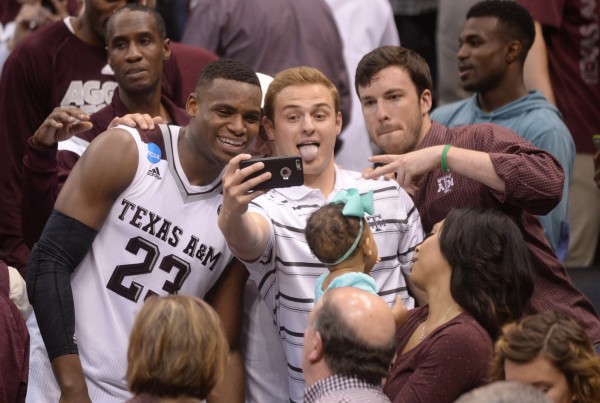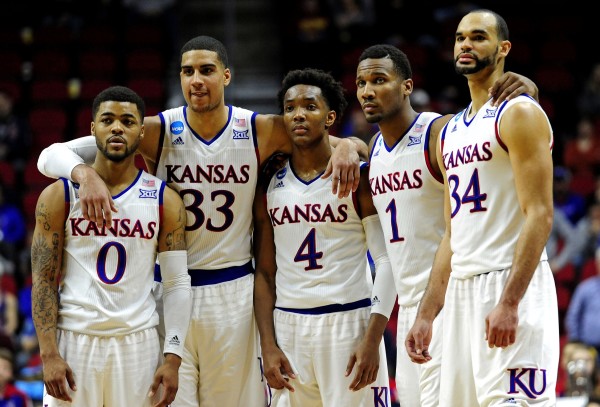Secrets to Sweet Sixteen Success: Factoids on Each Team
Posted by Shane McNichol on March 24th, 2016With a weekend full of brackets busted and buzzers beaten now behind us, the NCAA Tournament turns to a new and exciting chapter. Gone are the small school darlings and Cinderella dreamers hoping to make the most of the Year of Parity; remaining are a host of blue-bloods with a wide range of expectations and capabilities. The bracket hasn’t played completely chalky with stalwarts like Michigan State and Kentucky sitting at home and some double-digit seeds still alive. But rather than welcoming new faces to the Sweet Sixteen, it was Indiana that dispatched Kentucky and the low-seeded outsiders crashing the party are the likes of Syracuse and Gonzaga, the closest thing we have to a MINO (mid-major in name only?). March Madness has its storied traditions and history, but each team, each season, and each match-up is a unique snowflake with a lot of interesting context. Let’s examine something special about the run of each of the 16 remaining teams as we head into the second weekend.
- Kansas. Senior Perry Ellis may have just put together one of the most under-the-radar All-America campaigns in modern history. The evolution of his game has been a revelation for Kansas this season, and he’s not slowing down, with games of at least 17 points in every game this March. As but one example, Ellis made as many threes this season as he did in his prior three.
- Maryland. The Terrapins’ quest to finally be recognized and treated like a Big Ten program becomes a little stronger with each ensuing NCAA Tournament win. They still hold the ultimate bragging right among conference teams — The last Big Ten team to win the National Championship was Maryland (as an ACC member) in 2002.
- Miami. Jim Larranaga has proven to be a godsend for the Miami basketball program. In just five seasons, he’s already become the only coach to take the Hurricanes to multiple Sweet Sixteens. If Miami can top Villanova tonight, the Hurricanes would make its first ever appearance in the Elite Eight on Saturday — uncharted territory for Miami but not for Larranaga (George Mason, 2006).
- Villanova. Though rivalries of Philadelphia basketball run deep, the casual fan in the City of Brotherly Love has enjoyed a successful long-term run. With Villanova’s two wins last weekend, a team from Philly’s Big 5 (Villanova, St. Joseph’s, Temple, LaSalle, and Penn) has advanced to the second weekend of NCAA Tournament play in 10 of the last 20 years. The residents of Hawk Hill or North Philly may not be especially thrilled for their friends from the Main Line, but the levels of success and respect among the Philadelphia schools make their common bond that much more special.
- Oregon. If you’re looking for a team with which to compare this year’s Ducks, think outside the bracket. Try the 2004 Boston Red Sox. Oregon is looking to snap the nation’s longest streak between National Championships again this year. It took home the NCAA Tournament’s first title way back in 1939… and hasn’t returned to the Final Four since.
- Duke. The Blue Devils boast the most potent one-two scoring punch remaining in the field. Though Grayson Allen may lead them in scoring, Brandon Ingram’s presence is the difference-maker for this team. Since the NBA instituted a 19-year age minimum, the Final Four has featured at least one player who would later be selected in the top 10 of the upcoming draft. Ingram currently sits atop DraftExpress’ current Top 100, with Buddy Hield (ninth) being the only other player projected among the top 10. If Ingram is destined for the top spot in June, he’s looking to become the fourth player in the last seven years to win an NCAA Championship months before shaking the commissioner’s hand as the top pick.
- Texas A&M. I wrote glowingly about the Aggies back on February 4, going as far as to say, “Texas A&M’s sights should be set directly on playing in the Final Four in their home state.” Billy Kennedy’s club immediately responded by losing four games in a row. The Aggies have righted the ship since that slide, losing only once since Valentine’s Day (in the SEC Championship game against Kentucky). After overcoming a double-digit deficit to Northern Iowa in the final minute and shaking off my horrible jinx, Texas A&M may turn out to be a team of destiny.

Texas A&M’s Danuel House Led the Comeback to Push His Team Into the Sweet Sixteen (USA Today Images)
- Oklahoma. Looking for a favorite Buddy Hield statistic? There are plenty of options. He has as many made three-pointers this season as four Division I teams. He led the Big 12 in three-point percentage and three-point attempts. His 136 made three-pointers were the most in the Big 12 by far, a whopping 49 more than the player in second place. He’s the only player in college basketball since 1994-95 to make at least four threes and grab at least 5.5 rebounds per game. Yeah, he’s pretty good.
- North Carolina. The Tar Heels’ current six year Final Four drought is the school’s longest since an eight-year span from 1982-90 under Dean Smith. For most programs, six years without a Final Four is business as usual; for a program like North Carolina, it can seem like an eternity.
- Indiana. Jumping back to Maryland’s claim as the Big Ten’s most recent champion, the Hoosiers would love to put an end to that narrative. It may be hard to believe, but the Big Ten has logged only one championship in the last 25 years (Michigan State – 2000). The conference has fewer championships in that period than five schools (Duke, UConn, UNC, Florida and Kentucky).
- Notre Dame. Basketball will always play second fiddle to the gridiron in South Bend. Football is king and success on the hardwood is just gravy. Being good at both in one year must be a reason for real celebration, but that hasn’t been a common occurrence. Notre Dame hasn’t reached the Elite Eight in a year that the football program won 10 or more games since 1977 (when they reached both the Final Four and won the football National Championship). After their Fiesta Bowl season this year, they can break that streak with a win over Wisconsin this weekend.
- Wisconsin. The Badgers’ bounceback second half of the season has been nothing short of brilliant. Wisconsin is 13-3 since January 17, with wins over Michigan State, Indiana, Maryland, Iowa and Xavier. From an opening night loss to lowly Western Illinois to Bo Ryan’s retirement to a late hot streak and Greg Gard’s promotion to full time, this Badgers team has been through so much already this season — why not cap it off with a third consecutive trip to the Final Four?
- Virginia. The Cavaliers have led the nation in two relevant categories this season. They have played the toughest schedule in college basketball, per KenPom, and despite the outstanding quality of their opponents, they haven’t budged from commanding the slowest tempo in the sport. Opponents have necessarily struggled to adjust, with Virginia allowing fewer than 55 points in 14 of its victories this season.
- Iowa State. The Cyclones are responsible for the single wackiest statistic in the sport this season — Iowa State’s opponents have scored the second fewest percentage of their points from the foul line. At the other end, however, the Cyclones have scored the absolute fewest percentage of their points via free throws. The yin and yang of never fouling and never being fouled amounts to nothing more than an odd strategy and games that struggle to hit their media timeouts.
- Gonzaga. Though the clock struck midnight on Gonzaga’s Cinderella status many years ago, the Zags have proven to be a tough out in recent seasons. Elimination at the hands of Syracuse would be the Bulldogs’ first loss to a double-digit seed since the Matt Bouldin days back in 2008. In six of the seven years since that loss, Gonzaga has been bounced by either a #1 seed or a team that eventually advanced to the Final Four.
- Syracuse. The NCAA Tournament never ceases to befuddle. A team that once lost to St. John’s and finished 1-5 down the stretch finds its way into the second weekend with a game against a lower seed! The vaunted Syracuse zone has its pros and cons, making the Orange the most highly variable team still alive. The zone forces the longest average possession in the nation and the lowest three-point percentage in the ACC. On the other hand, Syracuse’s conference opponents secured the second-highest rate of offensive rebounds and assisted on the highest percentage of their baskets. The zone giveth and the zone taketh away.















































